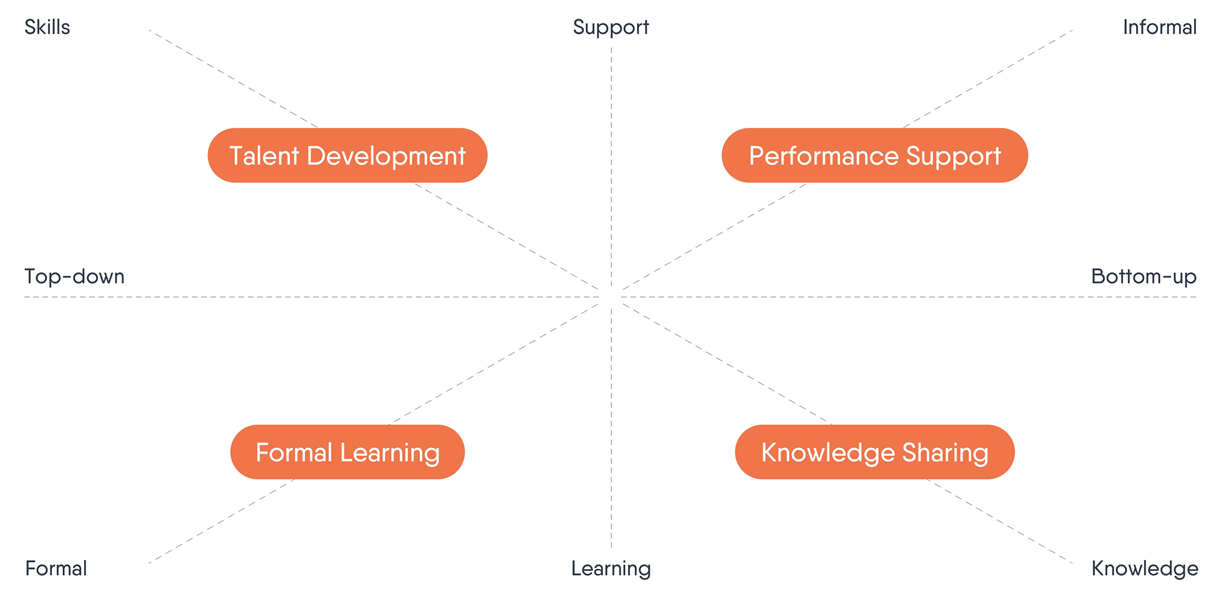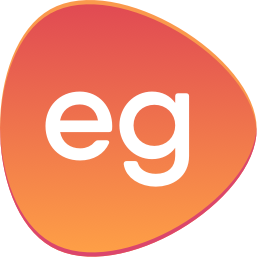Tectonic Changes For L&D
Those of us who work in L&D right now are quite lucky. We're part of a profession that’s in the midst of a fascinating transformation. In this article, we’ll dive into some of the developments that are at the heart of this transformation. We’ll look at their impact on the systems used for delivering L&D and how learning content is likely to be generated in the future.
The Shift Toward Informal Learning
You’re probably pretty familiar with formal learning. It’s usually delivered face-to-face or online, with L&D departments setting goals and objectives and creating courses and classroom training for them. Informal learning is the opposite. It’s not planned or organized from the top-down, it happens whenever it’s needed. Learning is not about the transfer of knowledge, but about performing and working better.
Nowadays, employees have the whole of the internet available to find the information they require. They are used to satisfying their own learning needs informally. Now, many L&D departments are moving their focus and budget away from formal learning to informal learning.
A More Bottom-Up Approach To Learning
Traditional, formal learning methods rely heavily on a top-down approach from L&D, with objectives pushed down, and employees expected to follow. But with plenty of online information available at their fingertips, learners are now less likely to wait for formal training to meet their development needs. This is why many L&D departments have started nurturing a more bottom-up process to learning—one where workers are encouraged to be in charge of their own development needs. This upward approach allows employees to work toward goals they’ve set themselves, at their own pace, and through self-study, while also supporting informal learning.
A Focus On Skills Rather Than Knowledge
Many L&D professionals have come round to the idea that it doesn’t matter how much you know if you’re not able to apply that knowledge.
Indeed, there’s a big difference between having the skill to do something and having the knowledge to do it. Or, as workplace development specialist Cathy Moore puts it, "Learning is not about what you know, but what you are able to do." From a training and development perspective, workers want more than just knowledge. They want action, and they want to be as engaged as possible in their learning. As a result, L&D teams are increasingly packaging their training to ensure employees are equipped to deliver their business goals in the real world, rather than just in the classroom.
Moving From LMS To LXP
L&D departments are doing the best they can to keep up with bottom-up and informal learning. Unfortunately, many are still grappling with Learning Management Systems (LMSs), which are too limited to support that shift.
This is where Learning Experience Platforms (LXPs) come in. Their Netflix-style interface gives employees access to the right training as and when they want it. It also allows them to discover new content, connect with experts in their field, and get recommendations.
Although LXPs are certainly a step up from LMSs, they also have limitations, especially when it comes to supporting workplace performance.
Performance Support Systems (PSS), on the other hand, provide the whole package when it comes to facilitating this movement toward a learner-driven model. Also known as workflow support tools, they combine the user-centered design of LXPs with a platform that allows employees to easily author and share their own content.
Supporting Performance On The Job
There’s a growing consensus that performance support is much better suited to modern workplace requirements than the traditional approach, which frequently takes learning from the work floor into a classroom. Performance support relates to a set of tools that are designed to help solve an employee’s problem as quickly as possible, and without having to step out of their work environment. These tools often require only a short interruption from the particular task they’re working on. They can come in a variety of formats, including videos, podcasts, eBooks, or interactive PDFs.
But although on-the-job performance support is increasing, it can be hard to deliver—particularly given the complexities of providing the right content at the right time. Nonetheless, we predict a significant proportion of L&D budgets will be shifted toward it in the future, rolling out L&D systems such as the ones we’ll describe below.
Moving Toward Employee-Generated Resources
Thanks to the shift toward informal learning and the growing popularity of PSS, we’re also seeing an exciting transformation happening in content creation. Traditionally, formal learning is created by Instructional Designers who go back and forth between subject experts to put their course together. This makes it rather resource-heavy. The cost per hour of eLearning content can range from $9,000 to $30,000 and it can take up to 240 hours to produce. Not only that, but it also goes out of date quickly.
Employee-generated learning, on the other hand, allows workers to come up with their own content. Authoring tools provide user-friendly toolkits that make it easy for employees to create, update, and access their own training and other resources.
It offers a useful and increasingly common alternative for content creation, giving access to inexpensive, high-quality, and peer-reviewed training that acknowledges employees’ first-hand knowledge and expertise.

Conclusion
L&D’s 180-degree turn toward informal and upward learning has shifted its role from a controller to a facilitator and moderator.
Although there are several areas where a top-down approach will remain common, such as security, compliance training, and some of the leadership development programs, employee-led learning is here to stay. Workers expect to be in charge of their professional growth, and L&D teams need systems that can accommodate those expectations. PSS tools, which combine user-centered interfaces with employee-generated learning, will allow you to make the most of this shift.


